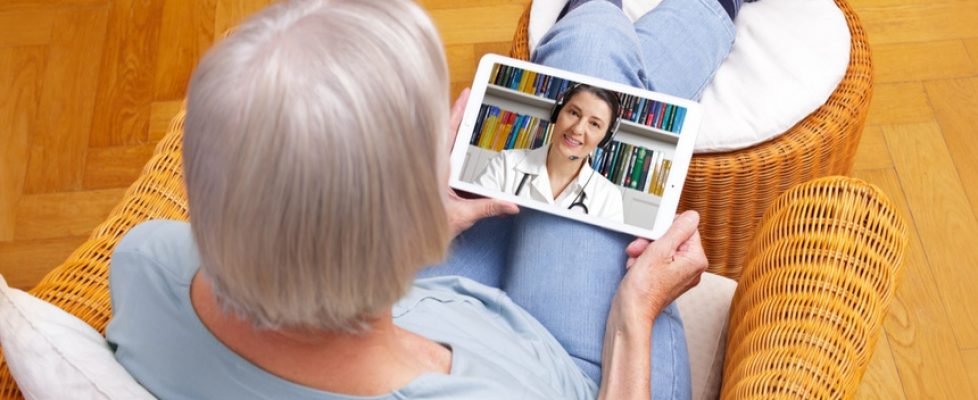OIG to Audit Telehealth Services Provided During Pandemic by Part B and Home Health Providers
The U.S. Department of Health and Human Services (HHS), Office of Inspector General (OIG) recently updated its 2021 Work Plan in January to include audits of Medicare Part B and home health telehealth services by OIG’s Office of Audit Services (OAS). OAS conducts independent audits of HHS programs, HHS grantees, and contractors to examine their performance in carrying out their responsibilities and to provide independent assessments of HHS programs and operations. The announcement of these audits follows on the heels of the announcement in October 2020 of OIG’s plan to assess the use of telehealth by Medicare beneficiaries during the COVID-19 public health emergency (PHE).
Throughout the PHE, telehealth has played an important role in facilitating care for patients who were unable or unwilling to travel to a health care facility in order to obtain in-person services. The Centers for Medicare and Medicaid Services (CMS) responded by extending numerous flexibilities for telehealth services ─ some of which were made permanent under the 2021 Physician Fee Schedule Final Rule, as we previously discussed. As CMS explores how telehealth services can be expanded beyond the PHE, OIG plans to assess the type of skilled services provided via telehealth and evaluate whether such services were administered and billed in accordance with Medicare requirements, in order to make recommendations to CMS. The inclusion of these items in the OIG Work Plan also indicates that telehealth is an area of priority for review and enforcement by OIG.
Medicare Part B Services
Waivers issued during the PHE significantly broadened the type of health care practitioners permitted to bill for Medicare telehealth services. OIG announced in the Work Plan that it will conduct a two-phase series of audits of Medicare Part B telehealth services to determine whether Medicare requirements are met. Phase one audits will focus on certain service types, such as evaluation and management, opioid use order, end-stage renal disease, and psychotherapy. Phase two audits will include additional audits related to distant and originating site locations, virtual check-in services, electronic visits, remote patient monitoring, use of telehealth technology, and annual wellness. The report for this audit is expected to be issued in Fiscal Year 2021.
Home Health Services Provided as Telehealth
During the PHE, CMS waived certain requirements and amended regulations related to Medicare telehealth which allowed home health agencies to use telecommunications systems in conjunction with in-person visits under specific circumstances. For instance, while telehealth services could not replace in-person visits ordered on the patient’s plan of care, telehealth services could be a component of the plan of care, if the treating clinicians in their clinical judgment determined and documented that the use of telecommunications technology would assist in achieving the goals of the plan of care. In the Work Plan, OIG announced that it will evaluate home health services provided during the PHE to determine which types of skilled services were furnished via telehealth, and whether those services were administered and billed in accordance with Medicare requirements. Providers can also expect that any services deemed to be improperly billed will be reported as overpayments. The report for this audit is expected to be issued in Fiscal Year 2022.
Impact for Providers
2020 brought many changes very quickly across the healthcare industry, most notably in the use of telehealth. Many providers rapidly expanded on their existing telehealth offerings, or hastily implemented new (and perhaps informal) telehealth solutions, to adapt to the evolving circumstances. However, as we approach the one year anniversary of battling the PHE, OIG appears to be signaling not only that it believes telehealth is here to stay, but also that telehealth billing compliance will be a key focus area. Audits conducted by OAS are designed to examine and independently assess HHS programs and operations. Thus, these audits will likely result in recommendations to CMS for further changes to telehealth rules aimed at promoting the twin aims of encouraging effective and efficient use of telehealth services, while at the same time reducing fraud, waste, and abuse.
Providers must consider their current (and intended future) use of telehealth and revise compliance programs, policies, and procedures accordingly, as well as incorporate staff education on the requirements for properly performing and billing for these services.
Given the dynamic nature of the telehealth landscape today – and the uncertainty inherent in operating under flexibilities that may expire and rules that may change – this presents unique challenges. Nonetheless, compliance with the telehealth requirements merits attention, and it appears OIG is taking it seriously.

